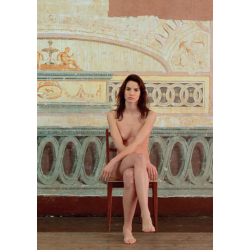








Since the beginning of its career, in 1967, the film has occupied a central place in the investigation carried out by Julião Sarmento on the repressed impulses of the psyche. Sarmento's relationship with the film began at a critical moment in the history of cinema, when the harsh laws on obscenity were about to collapse, at the end of a decade guided by the release of the erotic impulse. Across Europe and the United States, the development of vital experimental and independent cinema challenged the dominance of Hollywood models of fantasy and desire. In Portugal, the left-wing political revolution was about to overthrow the Salazar regime, leading to a radical new wave of cinema that addresses the issues of social emancipation. In the art world, the traditional boundaries between film and other art forms had been relaxed by artists who had embraced film as part of their process-based art practice.
[Chrissie Iles]
Much of Sarmento's material, and his approach to art production, can be found in this simple opening film: the focus on women, sexuality and objectification; the monochromatic wall as a blank canvas (which would be incorporated into his White Paintings two decades later); the fusion between the body and the background; and, above all, the amplification of the medium itself to neutralize cinematic illusions and open up the meaning of the image. This approach is used by Sarmento in many of his earlier films. In Faces (1976), Sarmento focuses on tongues touching, a sensual act that, viewed repeatedly in uncomfortable detail, loses its erotic aura and becomes a study of movement and anatomy. In Sombra, from the same year, the lighting varies slowly over two naked women, transforming the erotic image into a study of chiaroscuro.
[Kerry Brougher]
Data sheet
You might also like